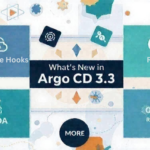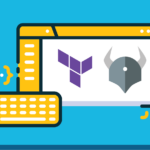
Serverless computing has changed the way modern applications are built, deployed, and managed. By eliminating the need for infrastructure management, it allows developers to focus entirely on writing code. Cloud providers like AWS Lambda, Azure Functions, and Google Cloud Functions handle everything behind the scenes — from provisioning to scaling. But as appealing as serverless may be, this model introduces unique security challenges and compliance considerations that can’t be ignored.
Understanding Serverless Architecture
At its core, serverless computing enables you to run code in response to events without managing servers. You are billed only for the compute time you consume. This model supports faster development cycles, automatic scaling, and cost-effective operations. However, it also brings in a new paradigm of distributed systems, where traditional security models don’t always apply. The serverless environment decentralizes application components, increasing the surface area for potential attacks.
Why Serverless Introduces New Security Risks
Unlike traditional environments where you control the server, serverless puts the infrastructure in the hands of the cloud provider. You’re still responsible for securing your application logic, APIs, configurations, and data. One of the most common risks is insecure function code, which can open the door to injection attacks or remote execution if not properly validated. Event injection is another concern — attackers can exploit poorly handled triggers like HTTP requests or queue messages to send malicious data. Moreover, many developers unintentionally assign overly broad permissions to their serverless functions, increasing the chance of privilege escalation. And let’s not forget about data exposure — functions often handle sensitive information, and improper encryption or logging can lead to compliance violations. Finally, serverless functions can be misused for Denial of Wallet (DoW) attacks, where repeated function invocations inflate cloud costs dramatically.
Compliance Considerations in Serverless Environments
As data privacy regulations continue to evolve, ensuring compliance within serverless architectures is more important than ever. Regulatory frameworks such as GDPR, HIPAA, and PCI-DSS still apply, regardless of how your app is deployed. Ensuring data residency, especially for global applications, is key — your data must stay within approved jurisdictions. Logging and audit trails are crucial for accountability; every function call and configuration change should be logged securely. Data should be encrypted both at rest and in transit. Retention policies must also be enforced to control how long logs and data are stored. Additionally, since you’re relying on a third-party provider, it’s critical to evaluate their certifications and understand their shared responsibility model.
Best Practices to Secure Serverless Workloads
Security in serverless starts with adopting the principle of least privilege. Each function should have only the permissions it needs — no more, no less. Input validation should never be skipped. Validate all inputs, sanitize user data, and use schema-based checks to reduce injection risks. When using third-party libraries, keep them updated and scan them regularly using tools like Snyk or npm audit. At the API level, use authentication protocols such as OAuth2 or JWT and implement rate limiting to prevent abuse. It’s also recommended to monitor all activity with real-time logging, leveraging tools like AWS CloudWatch or Azure Monitor. Separate your functions based on sensitivity and risk — don’t bundle critical logic with low-risk routines. For managing secrets, avoid hardcoding credentials and use services like AWS Secrets Manager or HashiCorp Vault. Finally, make security a core part of your CI/CD pipeline with automated testing and vulnerability scans before deployment.
The Future of Serverless Security
The serverless ecosystem continues to mature, and so do its security solutions. Providers are introducing features like code signing, which ensures that only approved and verified code is deployed. VPC integration allows functions to operate within private networks, providing better control over traffic and data flow. Service meshes and zero-trust architecture are also making their way into serverless designs, offering layered defense and better identity management. As new serverless frameworks like Knative and OpenFaaS emerge, the community is increasingly focusing on improving observability, runtime control, and portability, all while strengthening security.
Conclusion
Serverless computing brings a world of benefits — from reduced operational overhead to instant scalability and lower costs. However, these advantages should not come at the expense of security and compliance. By understanding the unique risks of serverless environments and implementing strong security practices, businesses can confidently embrace this modern architecture. Regular audits, automated security testing, and a commitment to responsible development are essential for building secure, compliant, and high-performing serverless applications.
Follow us for more Updates












